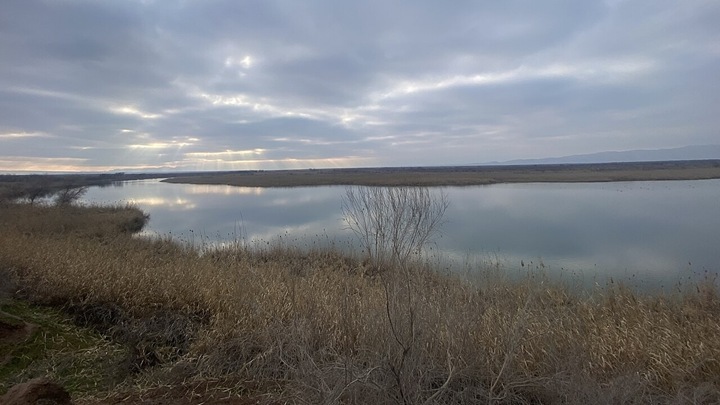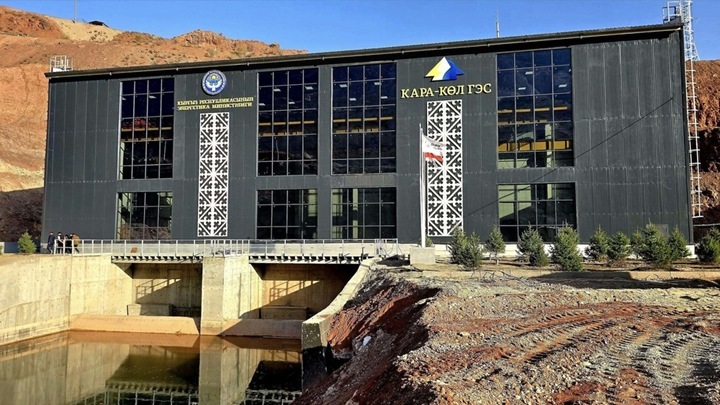Hydropower threatens a UNESCO World Heritage Site in Tajikistan
The Tigrovaya Balka Nature Reserve in Tajikistan, recently included in the UNESCO World Heritage List, is facing serious threats that call into question its long-term preservation. According to the latest assessment of the International Union for Conservation of Nature (IUCN), the prospects of this unique natural site cause “considerable concern.” The main risks are not related to the internal problems of the reserve, but to external factors – first of all, with the management of water resources and the development of agriculture in the region.

Located in the south-west of Tajikistan, between the Vakhsh and Panj Rivers, the Tigrovaya Balka Nature Reserve is the largest and best preserved stretch of floodplains with tugai forests in Central Asia. These floodplain forests, formed around rivers, are home to many species of flora and fauna, including the population of Bukhara deer, whose number here exceeds 300 individuals. The uniqueness of the ecosystem lies in its dependence on the natural hydrological regime, in particular, on seasonal floods, which have shaped the landscape and maintained biodiversity for centuries.
The main threat to the existence of Tugai forests comes from a cascade of hydroelectric power plants on the Vakhsh River. The construction of dams, which began in the 1960s, radically changed the water regime. The natural spring-summer floods necessary for the rejuvenation of forests have stopped. Now the ecosystem depends solely on groundwater and regulated runoff, which leads to desertification and salinization of soils. Without river spills, Tugai vegetation gradually gives way to salt marshes and desert species, which ultimately leads to the destruction of a unique biocenosis.
The problem is exacerbated by intensive agriculture in the buffer zone surrounding the reserve. The agricultural sector is the largest consumer of water in the region, which further reduces its supply to the Tigrovaya Balka ecosystem. In addition, wastewater from fields containing residues of pesticides and chemical fertilizers enters the reservoirs of the reserve. This creates an additional threat to biodiversity, especially aquatic life, and disrupts the fragile ecological balance.
The change in the water regime has already led to negative consequences for the fauna. Endemic fish species have been particularly affected, such as the endangered Amu Darya shovelnose, whose life cycle requires natural runoff of water and sediments. Although the population of the Bukhara deer remains stable, the degradation of its habitat in the long term may endanger this iconic species. It is also noted that the latest reports on birds, fish, aquatic plants show an alarming decline in various taxonomic groups. Environmental protection measures sufficient to ensure the long-term survival and restoration of the Tugai floodplain and its key species have not been developed and implemented.
The assignment of UNESCO World Heritage Status in 2023 attracted increased attention to the reserve and opened access to additional funding from international donors. However, the management of the reserve itself faces a number of difficulties – a shortage of qualified personnel, a limited budget and the lack of modern monitoring systems. But the main problem is that the administration of the reserve is unable to influence the national policy in the field of energy and water use. Further plans for the construction of new Dams, in particular the giant Rogun hydroelectric power station, may finally disrupt the hydrological regime necessary for the survival of Tugai. The recommendations of scientists on the need to simulate artificial floods, which have been given since 1975, have not yet been implemented.
Currently, the values of a unique natural site are very vulnerable to changes in the water regime caused by dams and irrigation in the upper reaches, which may worsen as a result of climate change. The decision to build the Rogun Dam, which is likely to consolidate the extremely unfavorable water regime, was made in 2024. If artificial floods are not developed and implemented as part of the operation mode of the Vakhsh hydropower cascade in connection with the implementation of the Rogun Dam project, the degradation of the Tugai ecosystem is inevitable due to the absence of floods and distortion of groundwater dynamics.
Thus, the future of Tigrovaya Balka depends entirely on whether coordinated water management plans for the entire Vakhsh River basin will be developed and implemented. The preservation of this unique natural site in Tajikistan requires not only efforts to protect its territory, but also a revision of approaches to agriculture and energy production in the region. Without comprehensive measures, World Heritage status may not be sufficient to save the last tugai forests of Central Asia.
Alexander Eskendirov (Rivers.Help!)
Original (in Russian): Гидроэнергетика угрожает объекту Всемирного наследия ЮНЕСКО в Таджикистане


